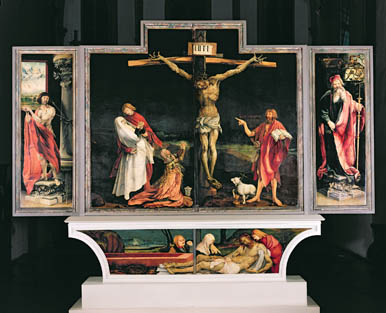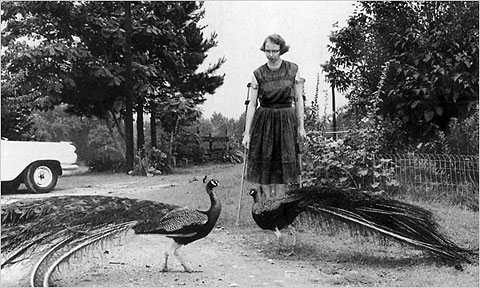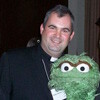I have a theory. I consider it impossible to read for more than twenty minutes in the academic fields of American literature or Catholic theology without encountering a quote from Flannery O’Connor. Go ahead, try it — pick a book or article from the last 15 years in either field and tell me you didn’t run across an O’Connor quote. I also suspect everyone’s favorite Catholic writer would herself be horrified at this development, so reminiscent as it is of the kind of “bumper-sticker theology” she decried in her writing and public talks. At the same time, who am I to swim against the zeitgeist? Also, I have another theory about storytelling and religious expression that I’d like to present here; since it dovetails nicely with a quote from O’Connor, please allow me to pile on with an O’Connor quote I have used several times while teaching to introduce syllabi or preface a lecture on the importance of narratives: “There is a certain embarrassment about being a storyteller in these times when stories are considered not quite as satisfying as statements and statements not quite as satisfying as statistics,” O’Connor wrote in Mystery and Manners, “but in the long run, a people is known, not by its statements or its statistics, but by the stories it tells.”
O’Connor knew a far different American religious landscape from that which we currently inhabit (she died 47 years ago), but her insight might be even more helpful today than in mid-century America, particularly when one considers the mainstream religious traditions that are (based on statements and statistics) undergoing titanic shifts in membership, adherence to core beliefs, and degrees of attachment to institutional structures. Anyone who follows the sociological data (or even reads the newspaper) has witnessed the concerns of church leaders, especially in Roman Catholicism and the mainstream Protestant denominations, about two generations of young people who seem to find less and less in institutional religion that appeals to them, or, at least, gets them in the pews with any regularity. Why won’t they come? Where will they go? Or, if you’re someone with more than a passing interest in making sure people encounter the Good News, how can we still reach them?
The philosopher Charles Taylor points in A Secular Age to a culture of “festivity” as making more sense for people who live in a mobile age; when we don’t feel tied to place or to tradition, we are more open to pilgrimage, to festivals, to large-scale religious “experiences” than we are to weekly attendance or local devotions. Anecdotal evidence for his argument can be found in the dichotomous way that American Catholics will turn out by the hundreds of thousands to celebrate the pope’s visit but are nowhere to be found a week later at Sunday mass, or the huge crowds of young Catholics that events like “World Youth Day” have drawn in the past decade. But does a once-in-a-lifetime pilgrimage, or a three-day visit to Madrid, really replace a lifetime of religious practice? And to what degree do such events actually just cater to the human need for spectacle, rather than the deeper need for real relationship with God?
Another possibility is to try to turn back the clock, and there are a few who want just that. Periodically in my ministry as a seminarian I encounter a young(ish) Catholic who tells me that “we young people are fed up with the baby boomers, and we want to reclaim the traditions our parents abandoned,” a notion that, if true, would offer intriguing possibilities. However, the “we young people” in that statement almost always means “my close circle of friends,” and not any larger movement. While some pundits have made anecdotal claims along these lines (for example, Colleen Carroll Campbell’s The New Faithful), sociologists of religion tend not to find any evidence for a larger cultural shift toward traditional Catholicism. Instead, sociological analyses like the recent Pew study show that the vast majority of Catholic young adults aren’t even showing up for mass, much less asking for Eucharistic adoration or longer hours for confessions. In fact, even those young Catholics who identify as strongly traditional are markedly different from their grandparents when it comes to adherence to the church’s teachings on hot-button issues. Returning to tradition might be satisfying to a few who want a “smaller, purer church,” but I doubt they realize just how small that church would be.
At this point we must address a more pressing question: what on earth does this have to do with that apparently completely gratuitous quote from Flannery O’Connor?
A great deal, that’s what. Because I agree with O’Connor that storytelling is the secret to passing on genuine religious belief and experience. In our shared stories, we can find a cultural moment where we can both validate the religious experience of non-traditional young believers but also pass on and retranslate the religious narratives that have defined millennia of belief, and that moment takes place both in the realms of what we normally consider high culture and low. I have experienced the “high culture” moment numerous times while teaching a class on Catholic novels for four semesters at two different universities. Students ambivalent to or ignorant of dogma are often remarkably adept at metaphor and narrative. Allow me to give an example—I had a student one semester who, I found out the first week of class, was a Universalist Unitarian. “Do you believe in Jesus?” I asked (two of the themes of the course were the appearance of Christ-figures in literature and the use of incarnational spirituality in novels). “I don’t know,” she shrugged, “it’s just kind of something we are.” I predicted an uphill struggle, and there were points in the semester where she was obviously bored or frustrated with discussion of specific points of doctrine or Catholic practice. But when she turned in her final project (a fifteen-page short story incorporating at least three of the “Catholic themes” we had discussed weekly), I was heartened and impressed. She told the story of a young woman who spent all day riding the New York subways, experiencing the endless monotony of the station calls and the back-and-forth between Brooklyn and the Bronx, and who explicitly linked that experience of repetition to the wearying events of her own life. Kierkegaard himself — or Camus, or Walker Percy — would have been impressed, I am sure. I certainly was. How does someone with no interest in dogma and no attachment to religious practice so perfectly capture the experience of huge numbers of adherents to both?
That’s the high-culture angle, and I know that making an appeal to authority via Kierkegaard is just as intellectually bankrupt as quoting Flannery, so let’s move on before you treat this like last Sunday’s sermon (there’s no free doughnuts when you’re done reading this, anyway). I have also found that there’s a low-culture angle to this connection an entire generation has with storytelling, and it may be an even more powerful connection than the high-culture one. This current semester, I have been teaching a seminar on the “Poetics of Bob Dylan” at a nearby Jesuit university. Okay, go ahead and laugh, but I did an informal tally of how many universities currently offer courses on Bob Dylan, and it’s over 300. He’s an important literary and cultural figure even if you do just think most of his songs are about his dope dealer. My students and I usually do a quick cultural-historical overview of a time period or theme, and then I give them the lyrics to a Dylan song, and we listen and I point out some of what I think are the important themes. The students in this course are bright and are by and large good writers, but they’re also college students, so they spend a lot of time staring at me blankly or texting in a manner they think is discreet (I suspect they forget that I am a student, too, mostly because they assume I am a hundred years old), so I’m often unsure if any of my lecture is hitting home. Every now and then, however, there will be a moment—not when I am talking about the rhyme scheme, not when I am musing over whether or not a particular verse refers to the hair of Joan Baez or of Edie Sedgwick — when a particular verse or stanza connects with their experience of journey or passage through difficulty. “That’s all about the experience of rejection from a lover,” someone will say, or “maybe that’s a reference to how the Vietnam vets felt when they returned home,” or “maybe this is about growing up one religion and believing in another.” (Please notice at this point that I have referred to Kierkegaard and Edie Sedgwick in the same essay. I’m pretty proud of myself). They connect with music that tells stories, and they listen to music that addresses their felt human needs. Might we not see parallels between this and the experience of people in the fifteenth century who “read” the stories depicted in the stained glass of so many medieval cathedrals?
Of course, it’s one thing to say “this generation connects with stories” and another to do anything with that beyond talk a little bit more about Edie Sedgwick. But it’s a starting point—because we have the stories, not only in our scriptures but in our tradition, the heritage of saints and revival movements and great monuments and terrible struggles for the faith. Maybe part of the secret of reengaging younger generations with the institutional and practicing church is not to give them spectacles, or cluck at them for their failure to engage with a church that needn’t ever change, but to emphasize again the narratives we all share. This is not to say that catechesis is not important, or that we can deemphasize the importance of practice or the centrality of our core beliefs; rather, it is to say that if they are not listening to the catechesis, perhaps we need to rethink the way the material is presented.
How to do that? Some of it happens through the identification of those products of our culture that are simpatico with and offer greater entry into the mysteries of the faith—and this has to happen at the high end of culture and at the low. I have a friend who told me that two of the times she has come closest to an experience of the divine were seeing the fifteenth-century Isenheim altarpiece in Colmar, France, and being at a Bruce Springsteen concert in his home state. I don’t doubt that this is true—among my own peak experiences of the thinness between the divine and the everyday have been seeing the ceiling of the church of Sant’Ignazio in Rome, reaching the final pages of J.F. Powers’ novel Morte D’Urban, and hearing Lucinda Williams sing “Sharp Cutting Wings (Song to a Poet).” All three told me a story, in their own way, and I remember all three so well because they are part of my own engagement with the mysteries of faith and life as much as or more than my understanding of religious dogma or my fidelity to traditional religious practice. It’s tempting to dismiss our experiences of popular culture (and we all have that one form or another on which we heap our contempt) out of a desire to preserve “the sacred,” but that’s a heresy (no, really it is, I can prove it). If God is to be found in all things, if every grain of sand is numbered, if every hair is counted, then the popular expression of culture is as sacred as what we consider the most refined…and probably has a lot better chance of reaching the 25-year-old in search of meaning than anything else.
And, friends, you can quote me on that; unless, of course, Flannery said it better.




